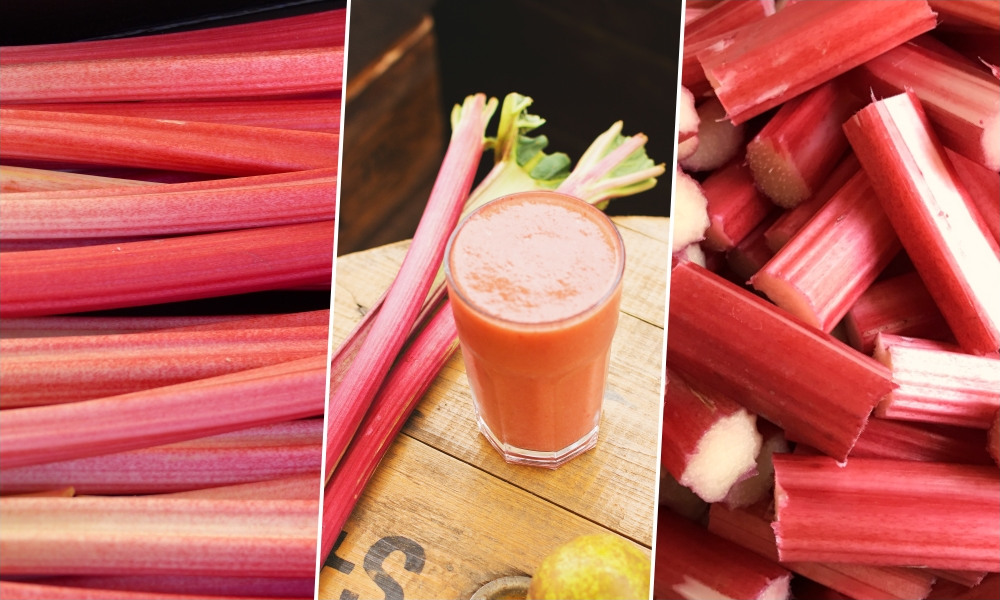Discover the colorful world of rhubarb, a versatile perennial plant cherished for its tangy taste, striking appearance and culinary versatility.
Rhubarb (Rheum) is a versatile and popular perennial plant known for its vibrant red stalks and tart flavor. It is a great addition to any garden and can be enjoyed both for its ornamental value and its culinary uses.
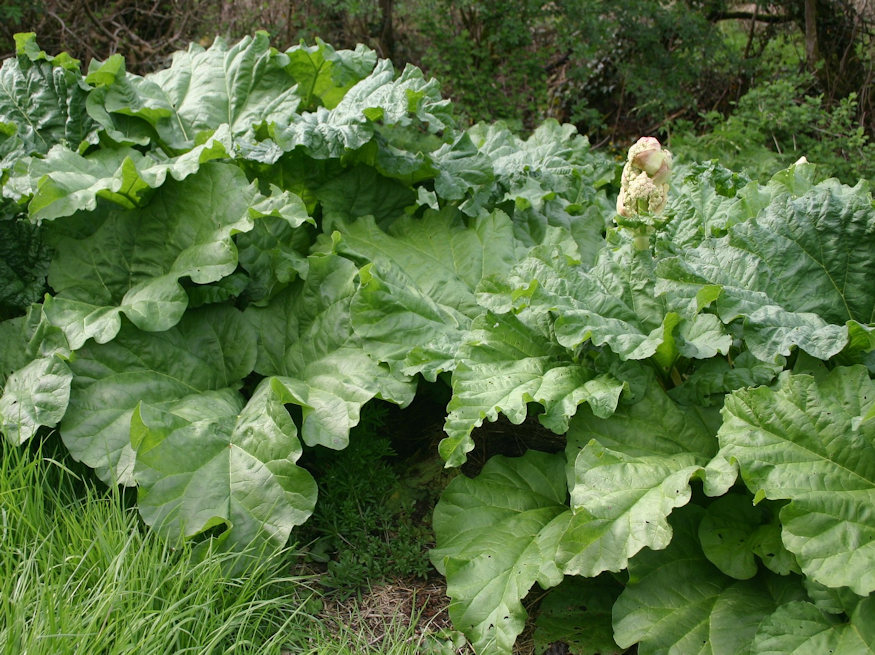
Appearance
Rhubarb is a herbaceous perennial plant that belongs to the family Polygonaceae. It has large, thick and fleshy stalks that emerge from a central crown, which is typically thick and woody. While most people associate rhubarb with bright red stalks, there are actually different color varieties available. In addition to red, you can find green and pink stalks, each with its own unique flavor profile. The leaves of the plant are large, textured and deeply lobed, giving the plant an attractive and ornamental look.
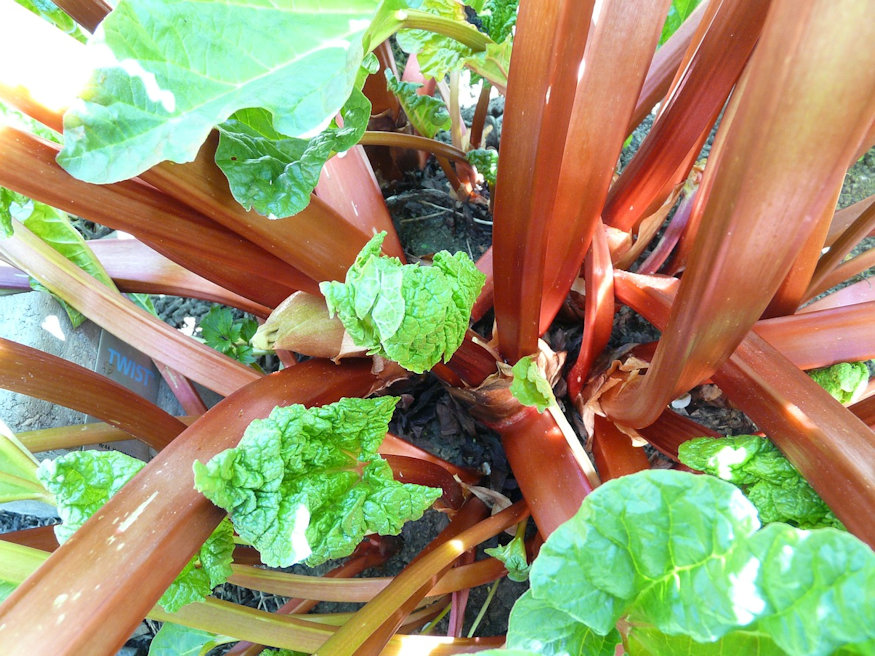
Rhubarb is a hardy perennial plant that can live for many years. With proper care, a rhubarb plant can continue to produce stalks for up to 20 years or more.
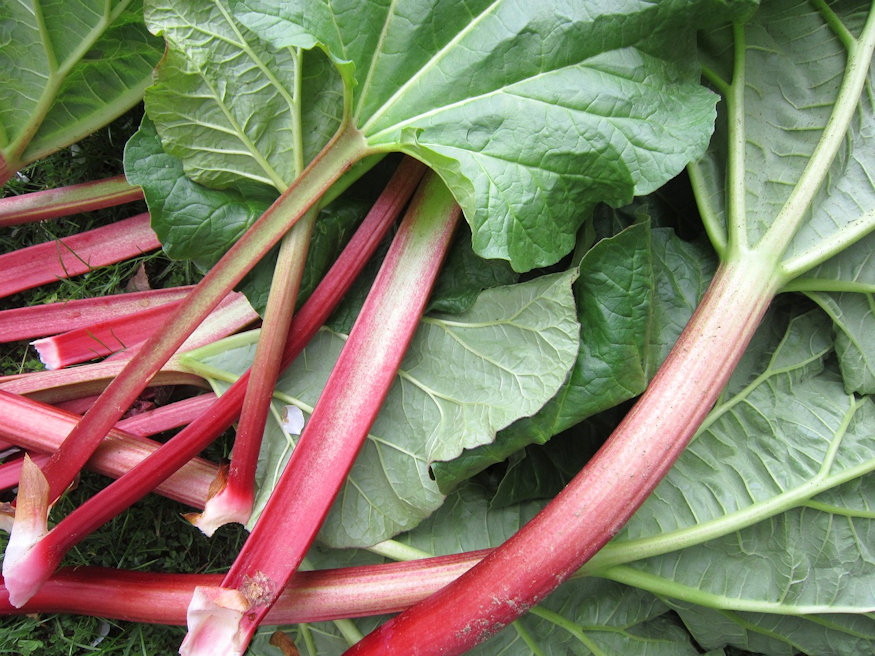
Garden Care
Location
Rhubarb thrives in cool climates and requires a location that receives at least six hours of sunlight daily. It prefers well-drained soil enriched with organic matter.
Planting
It is best to plant rhubarb in early spring or fall. Dig a hole wide and deep enough to accommodate the root system. Space multiple plants at least three feet apart to allow sufficient room for growth.
Watering
Rhubarb prefers consistent moisture, but it should not be waterlogged. Water deeply when the soil feels dry, ensuring that the plant receives about an inch (2-3 cm) of water per week.
Fertilization
Before planting, incorporate compost or well-rotted manure into the soil. Each spring, you can apply a balanced fertilizer to promote healthy growth.
Mulching
Apply a layer of organic mulch around the base of the plant to conserve moisture, suppress weeds and insulate the roots during extreme temperatures.
Maintenance
Remove flower stalks as they emerge to redirect the plant’s energy towards leaf and stalk production. In late fall, after the foliage has died back, cut the stalks to ground level.

Harvesting
Remember to harvest rhubarb by pulling the stalks, never cutting them, as this can cause damage to the crown. Harvest stalks that are at least 10 to 12 inches (25-30 cm) long and thick. Avoid harvesting all the stalks at once, allowing the plant to continue producing throughout the growing season.
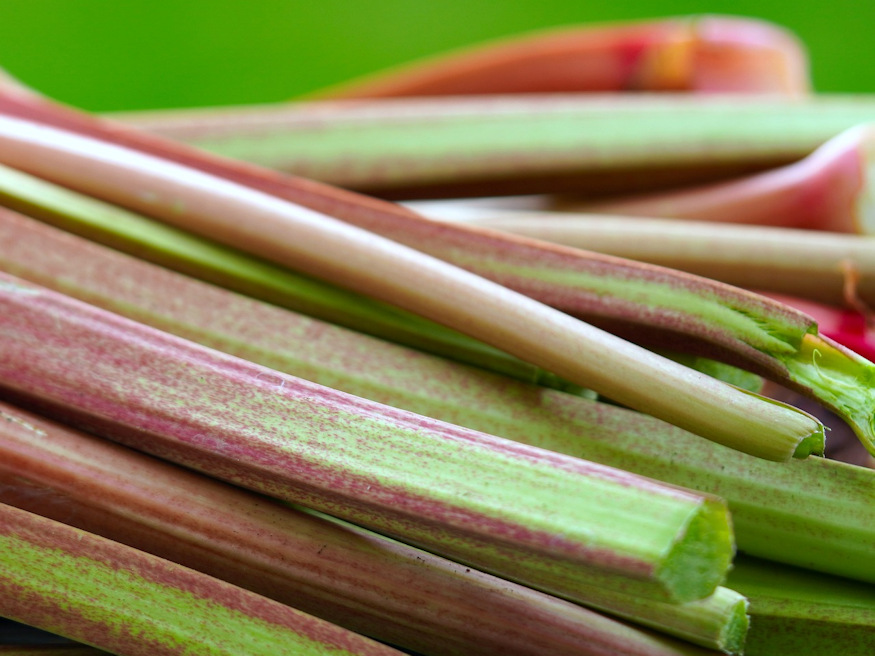
Forcing Rhubarb
A rhubarb forcer is a gardening tool or technique used to produce early, tender stalks of rhubarb. It involves covering the rhubarb plant or crowns with a specialized container or material to create a dark, warm environment, simulating the conditions of spring. The absence of light triggers the plant to send up long, pale stalks in search of light, resulting in an earlier harvest compared to field-grown rhubarb.
The most common type of rhubarb forcer is a traditional clay or terracotta pot with a wide, bell-shaped design. The pot is placed over the rhubarb crown, covering it completely and blocking out the light. The forcer is usually sealed at the top to keep out any light and create a dark environment. As the plant grows, it elongates its stalks to reach for light, and these pale, tender stalks are harvested for consumption.

The process of forcing rhubarb typically takes several weeks, depending on the desired length and thickness of the stalks. During this time, the rhubarb plant undergoes rapid growth as it stretches towards the limited light available. The resulting stalks are often sweeter and more tender compared to those grown in the open garden. Forcing rhubarb can extend the harvest season, providing an early supply of rhubarb for culinary purposes or enjoying the novelty of early harvest.
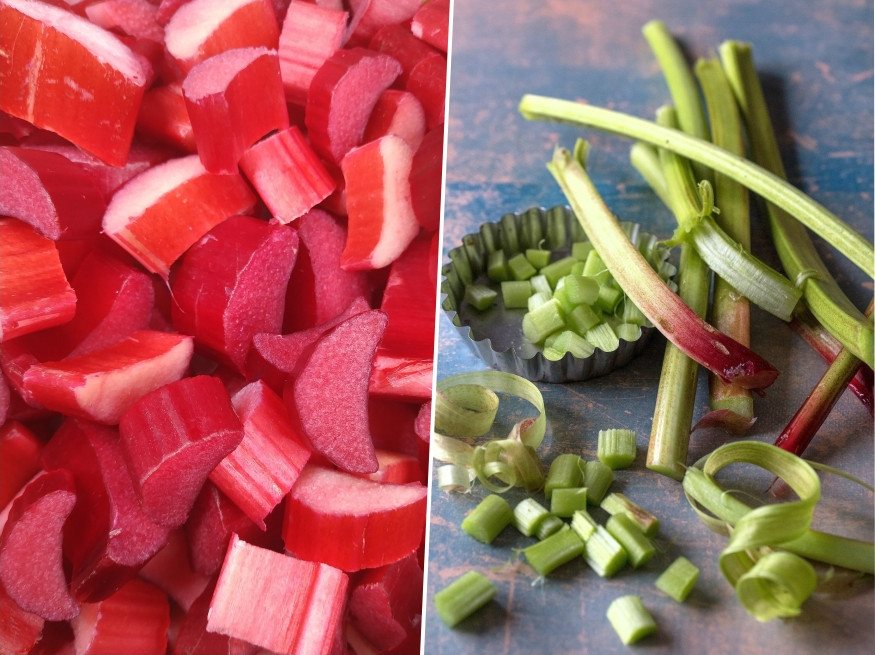
Culinary Use
The stalks of rhubarb are the edible part of the plant and are commonly used in cooking and baking. However, it’s important to note that the leaves are toxic and should not be consumed. Here are some culinary uses of rhubarb:
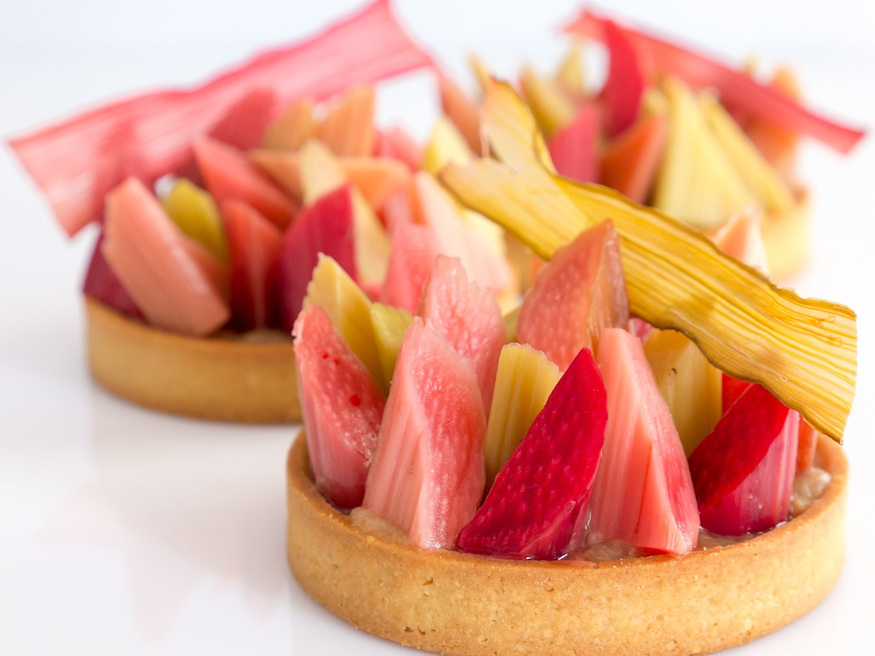
- Desserts: Rhubarb is often used in pies, crumbles and compotes. Its tart flavor pairs well with sweet ingredients like sugar, strawberries or apples.
- Jams and Preserves: Rhubarb’s high pectin content makes it ideal for making delicious jams, jellies and preserves.
- Sauces: Rhubarb can be cooked down into a tangy sauce that complements savory dishes such as roasted meats or poultry.
- Beverages: The stalks can be used to make refreshing rhubarb lemonade, cocktails or infused into vinegar for unique dressings.

Interesting Facts
- Ancient Origins: Rhubarb has a long history and was first cultivated in China over 5,000 years ago for its potential medicinal properties. It has been used to treat digestive ailments, promote healthy digestion and even as a laxative. It was later introduced to Europe in the 14th century and gained popularity as a food plant.
- Vegetable or Fruit? Although rhubarb is commonly used in desserts and considered a fruit in culinary terms, botanically it is a vegetable.
- Edible Stalks, Toxic Leaves: While the stalks of rhubarb are safe to eat and deliciously tart, the leaves contain toxic levels of oxalic acid and should never be consumed. The leaves can cause severe illness if ingested, so it’s important to discard them properly.
- Nutritional Value: Rhubarb is a low-calorie vegetable that is rich in vitamins and minerals. It is a good source of vitamin C, vitamin K and dietary fiber. It also contains antioxidants and has been associated with potential health benefits, such as aiding digestion and reducing inflammation.
- Rhubarb Festivals: Rhubarb is celebrated in various festivals around the world. For example, the city of Wakefield in England hosts the annual Wakefield Rhubarb Festival, showcasing different varieties of rhubarb and culinary creations.
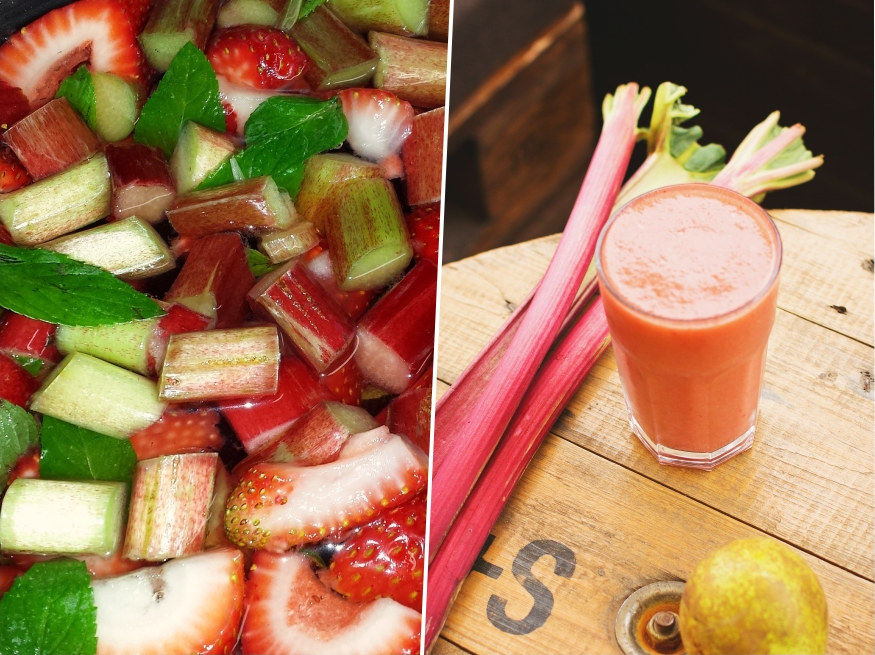
Rhubarb is a delightful addition to any garden, providing both aesthetic appeal and culinary versatility. With proper care and attention, you can enjoy its tangy goodness for many years to come.



